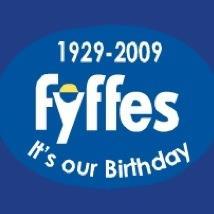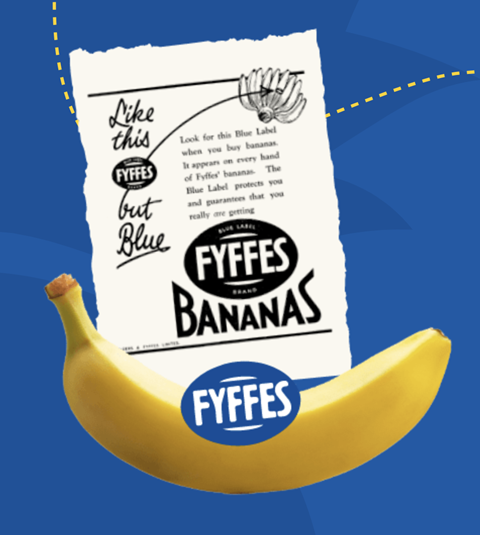
Tropical fruit importer Fyffes today celebrates the 80th anniversary of the launch of what is arguably one of the best-known fruit brands in the European market, and without question the oldest fruit brand marketed through the retail and wholesale business anywhere in the world.
On 16 July 1929, in the same year that Enzo Ferrari first put his name to racing cars, the distinctive blue Fyffes label was placed on the company’s imported bananas for the first time, a move which shaped how produce is marketed to this day. From that moment on, sticky labels on fruit emerged as perhaps the most effective, most immediate means by which produce marketers could connect with consumers and reinforce their standing in the market on the back of high-quality fruit.
Fyffes’ blue label project can ultimately be seen as a triumph in product branding. It was a move which, backed by a pioneering advertising campaign, enabled it to create not only a sense of trust and loyalty among consumers but also helped to reinforce the group’s standing in the fresh produce trade and proved to be the benchmark by which other major multinationals in the international fresh produce went about building up their own brand equity.

It was as much about raising awareness of Fyffes as a supplier, as it was about getting people to eat more bananas. The first Fyffes advertisement appeared throughout the UK in May 1929, but this was without the brand label and reportedly lacked the punch it so desperately needed. With the arrival of the newly established Jamaica Producer’s Association making competition in the British marketplace altogether more fierce, the banana finger label was conceived and, in July 1929, a press advertising campaign was launched in support of Fyffes’ national branding announcement.
It is interesting to note that at the same time as Fyffes was bringing its blue label to the masses, another famous Irish consumer brand, Guinness, was taking similar steps to generate a distinctive brand image and build awareness not just of its products but of its name and the kind of values it stood for. In much the same way as the Dublin-based brewery did during the 1930s and 1940s, Fyffes was creating a buzz around the ‘goodness’ of its own offering. As a result, trade customers and the general public became familiar with a series of imaginative, eye-catching and at times amusing posters campaigns which generated huge interest in the Fyffes name.
More recently, Fyffes has extended its brand positioning to television, radio, print and ambient media, as well as supporting the trade press – a crucial contribution which has helped independent publishing entities such as Eurofruit Magazine, Fruitnet.com and, in the UK, the Fresh Produce Journal, to continue marketing the industry’s major brands to retailers, importers and wholesalers. The company has also carried its experience and expertise in the field of product marketing to other brands, most notably the Israeli label Jaffa and the South African fruit brands Cape and Outspan.
According to a recent survey, the Fyffes brand has extended its reach further in recent years and can now claim to have 90 per cent awareness among consumers, compared with 74 per cent for its nearest competitor. “The longevity of the Fyffes brand marks a great achievement in the history of the company and is, in itself, a testament to the great care and attention afforded to the highly perishable product with which we work,” comments Fyffes chairman David McCann. “Our endless dedication to quality ensures that when consumers choose a Fyffes blue label-branded product they are buying the best.”
Fyffes is nowadays one of the world’s largest tropical produce groups, boasting turnover of €760m and involved in the production, procurement, shipping, ripening, distribution and marketing of bananas, pineapples and melons to Europe and the US. “Over the past 80 years, the Fyffes brand has gone from strength to strength,” says Laurence Swan, director for research and development at Fyffes. “The endurance of the Fyffes brand over an 80-year period can be attributed to the quality of the fruit to which the label is attached and the service levels behind it with only the freshest produce selected from the most reliable producers being permitted tocarry the famous Fyffes blue label.”



